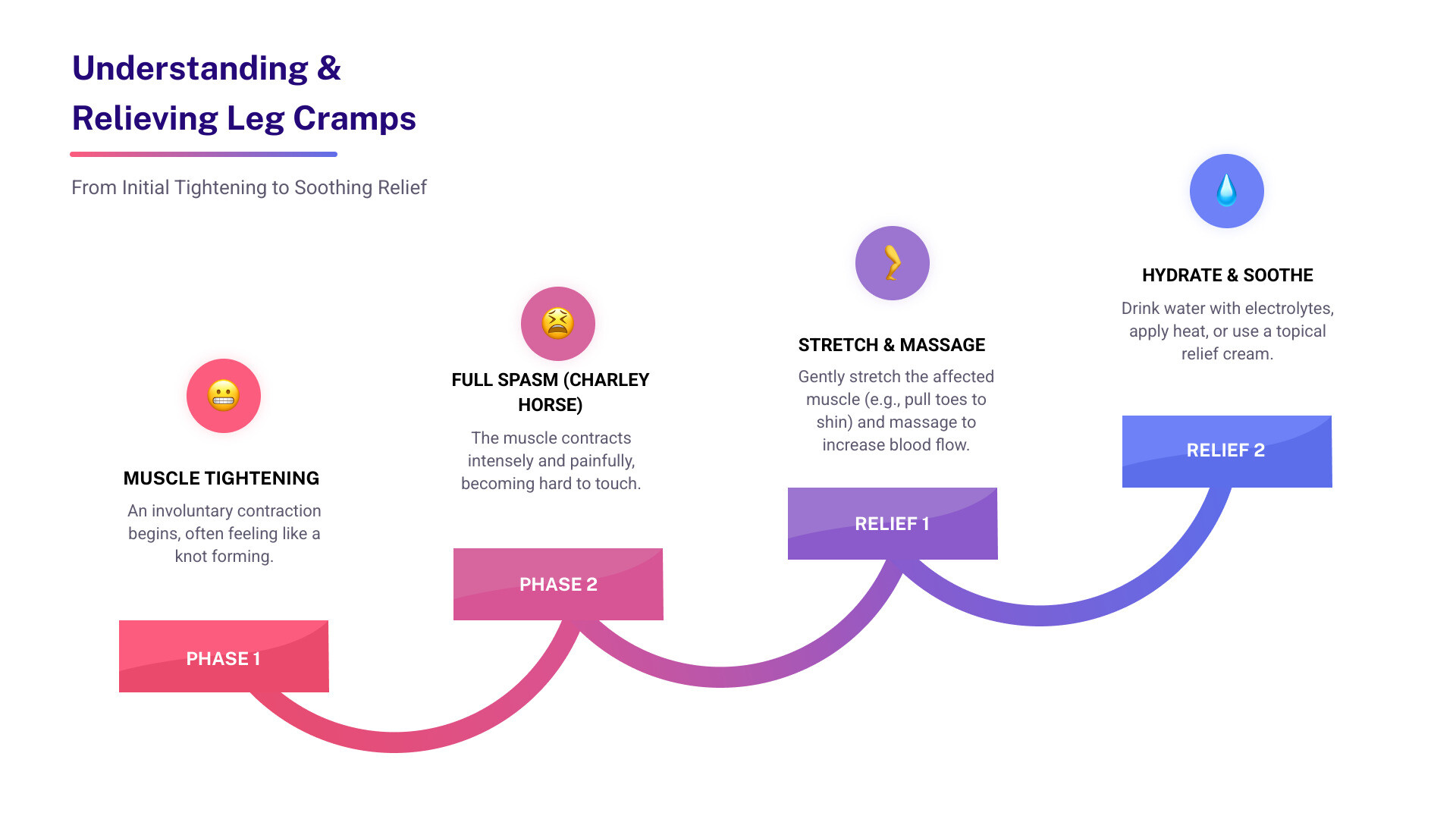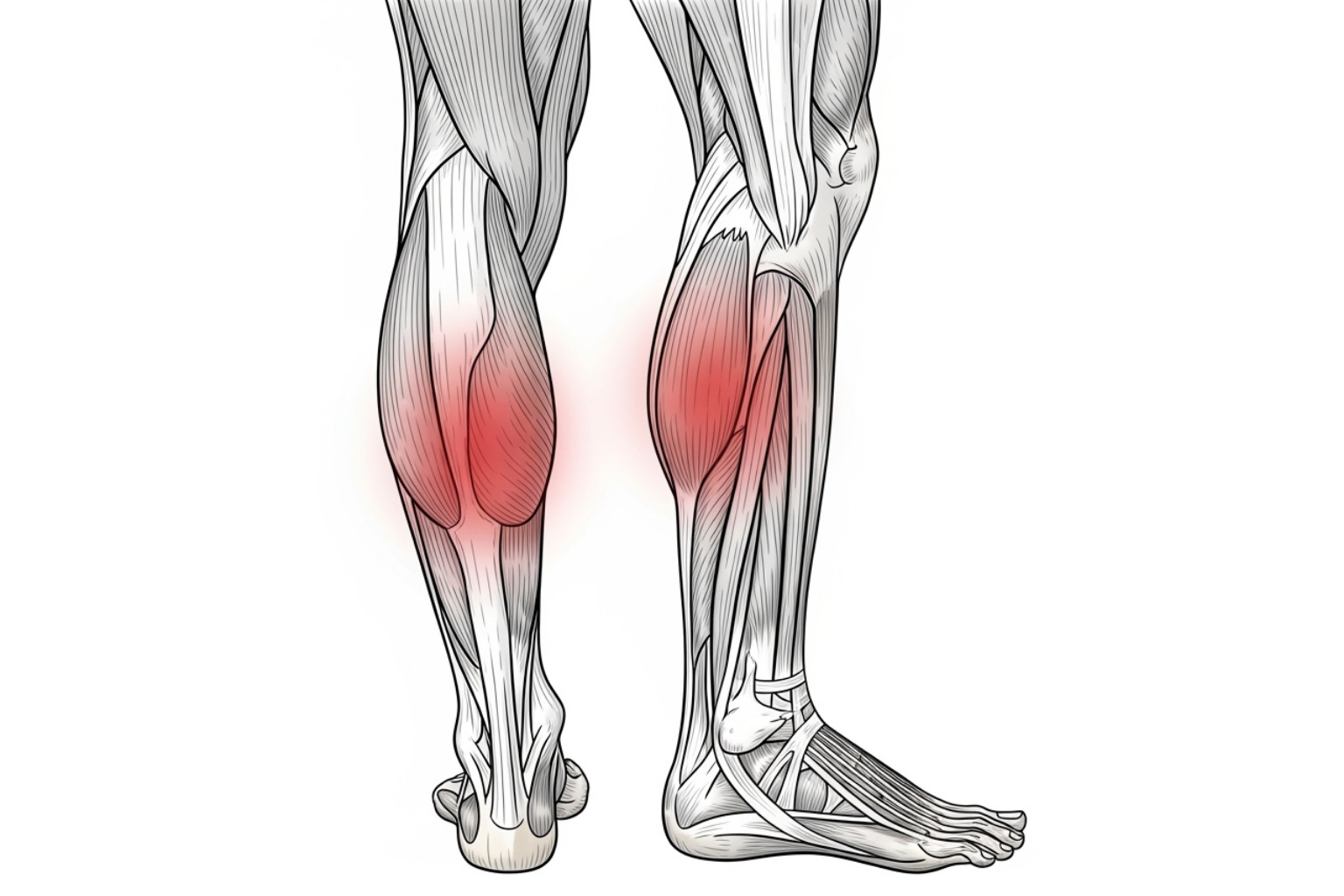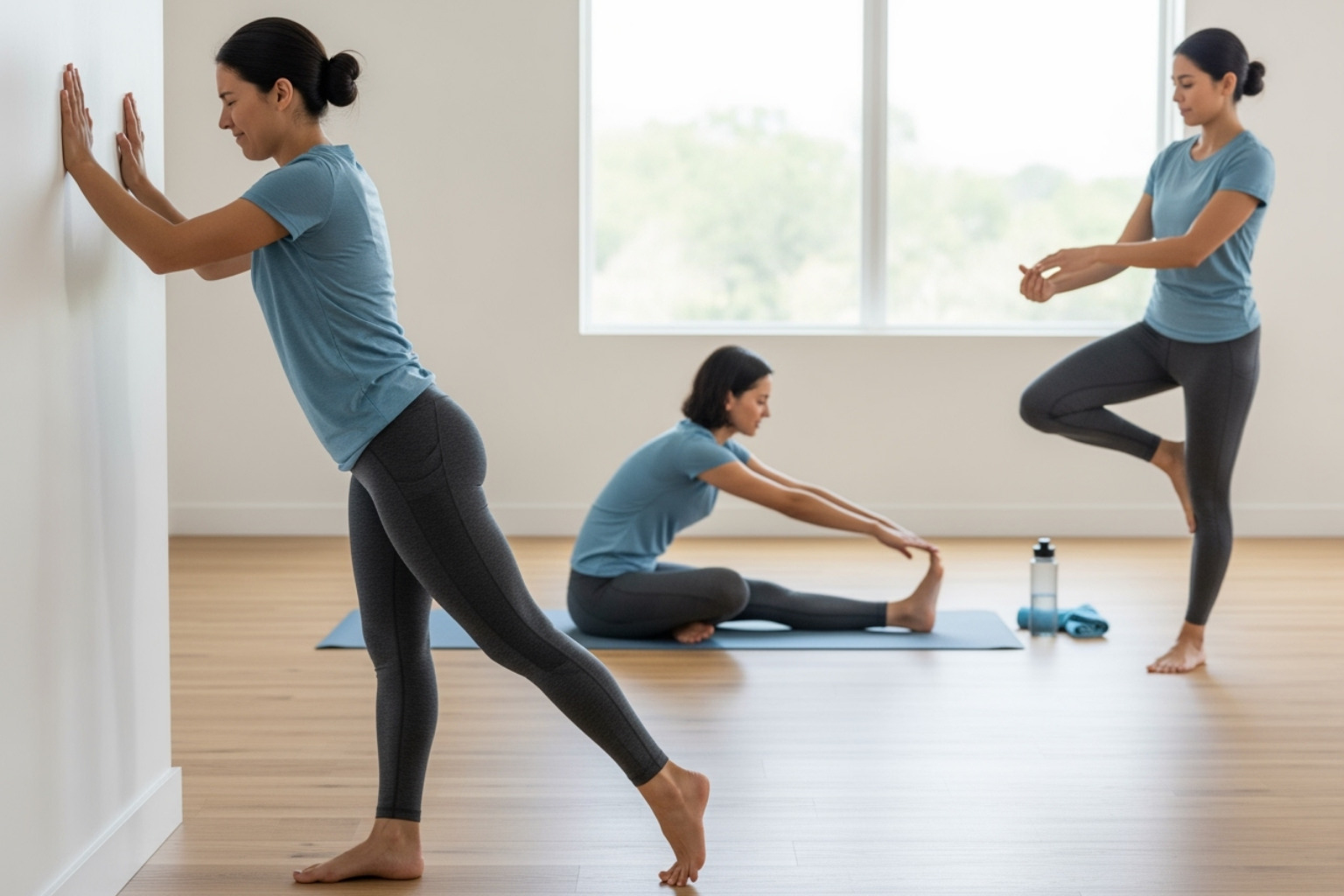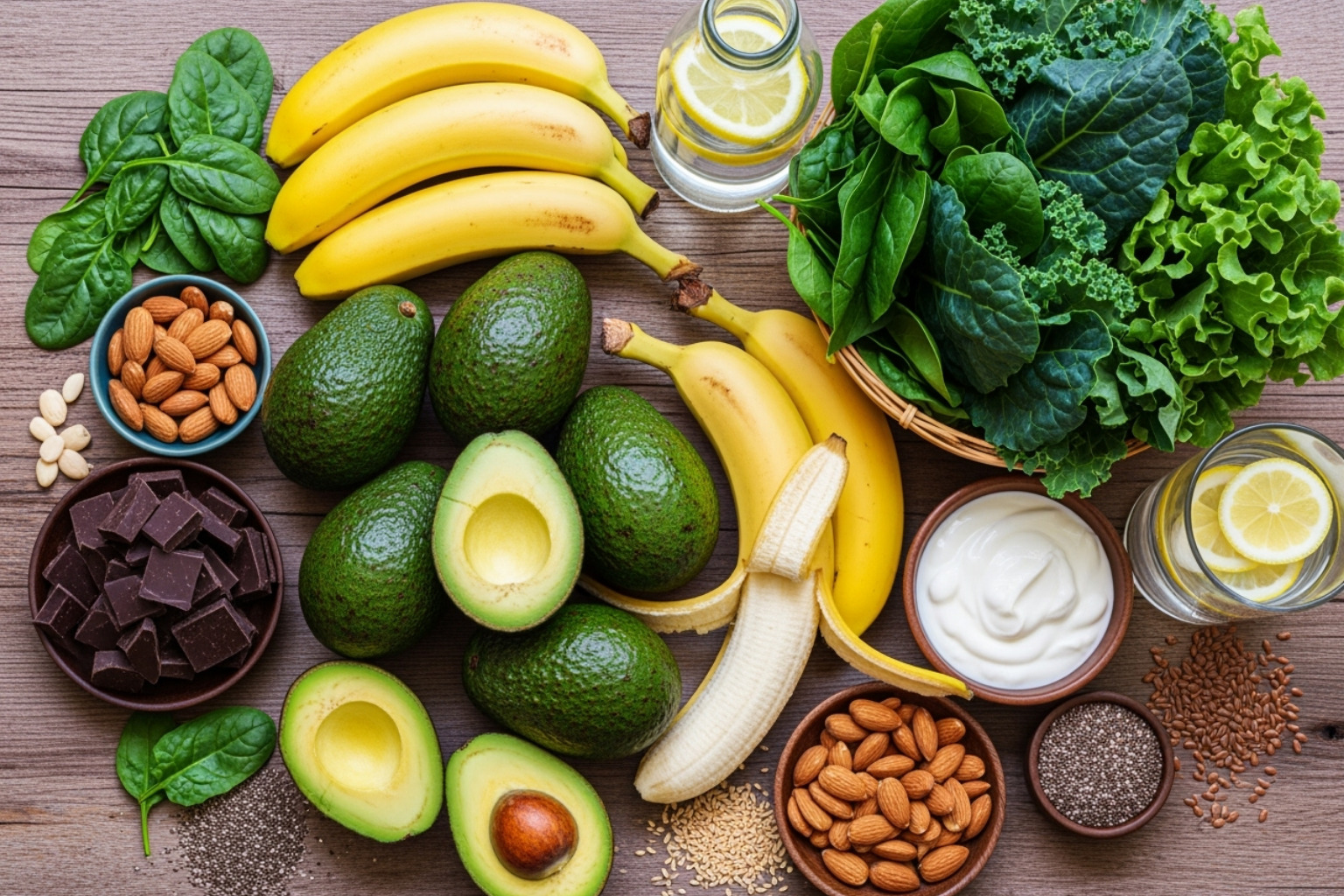Why Natural Leg Cramp Relief Matters More Than You Think
Natural leg cramp relief is something most adults will need. That sudden, painful squeeze in your calf at 3 AM—a charley horse—can be both startling and debilitating.
Quick Natural Relief Options
When a leg cramp strikes, these natural methods can help:
- Stretch the affected muscle - Straighten your leg and pull your toes toward your shin for calf cramps.
- Apply heat - Use a warm towel or heating pad to help the muscle relax.
- Massage gently - Rub the cramped muscle to increase blood flow.
- Stay hydrated - Drink water with a pinch of salt for electrolyte balance.
- Use topical relief - Apply a natural muscle relief cream like Neuropasil to soothe discomfort.
The numbers tell a sobering story. Leg cramps are common, with about one-third of people over 60 experiencing them. They are also a frequent issue during pregnancy, affecting up to half of all pregnant women. The vast majority of reported cases happen at night, disrupting sleep.
The good news? Most leg cramps respond well to natural remedies and simple lifestyle changes. From immediate relief to long-term prevention, you have more control than you might think.
I'm Tony Enrico. Having helped thousands of athletes and active adults find relief from muscle discomfort, I've seen how effective natural methods can be. This guide will show you what works, backed by research and real-world results.

Natural leg cramp relief helpful reading:
Understanding Leg Cramps: What's Causing the Pain?
A leg cramp, or "charley horse," is a sudden, forceful muscle contraction that refuses to release. It can last from a few seconds to several minutes, causing intense pain that can wake you from sleep or stop you mid-workout. Understanding the triggers is the first step toward lasting natural leg cramp relief.

Most cramps result from several factors working together. Let's look at the common causes.
Dehydration
Your muscles need water to function properly. When you're dehydrated, muscle cells struggle to contract and relax correctly, setting the stage for cramping, especially after sweating or in hot weather.
Mineral Imbalance
Electrolytes—minerals like potassium, magnesium, sodium, and calcium—are crucial for muscle function. An imbalance, often from sweating, poor diet, or certain medications, can disrupt muscle signals and cause cramps. Research links deficiencies in minerals like magnesium, as well as vitamin D and B vitamins, to increased cramping.
Muscle Overuse or Underuse
Both overworking your muscles and leaving them idle can cause cramps. Athletes often experience cramping from muscle fatigue after intense training. Conversely, prolonged sitting leads to poor circulation and stiff muscles that are more likely to cramp when you finally move.
The Aging Factor
As we age, our tendons naturally shorten, and muscles tire more easily. About 33% of people over 60 experience nighttime leg cramps at least once every two months. Muscles also become more sensitive to dehydration as we get older.
Pregnancy
About half of all pregnant women experience leg cramps. The extra weight, changes in circulation, hormonal shifts, and potential mineral deficiencies all contribute to this common issue.
Medication Side Effects
Some prescription drugs, such as diuretics ("water pills") and statins (for cholesterol), can cause cramping as a side effect. If you notice more cramping after starting a new medication, talk to your healthcare provider.
When Cramps Signal Something More Serious
While most cramps are harmless, they can sometimes point to underlying health issues like nerve compression, poor circulation (peripheral artery disease), or diabetes-related nerve damage (neuropathy). Conditions like hypothyroidism or kidney failure can also disrupt electrolyte balance. If you have frequent or severe cramps, it's worth learning more about leg pain and when to seek medical help.
Leg Cramps vs. Restless Legs Syndrome (RLS)
It's easy to confuse these conditions. RLS causes an irresistible urge to move your legs, often with tingling or crawling sensations, but without the sharp, painful muscle contraction that defines a leg cramp. Moving provides relief from RLS, whereas with a cramp, you stretch to stop the pain.
Immediate Relief: How to Stop a Leg Cramp in Its Tracks
When a leg cramp strikes, that painful tightening demands immediate attention. The good news is that several proven techniques can help the muscle relax, often within minutes.
Stretching Techniques
Stretching is your most effective first response. The goal is to gently lengthen the contracted muscle fibers.
- Calf Cramp: Straighten your leg and gently pull your toes toward your shin. Or, stand facing a wall, place your hands on it, and step one foot back, keeping it flat on the floor to stretch the calf.
- Hamstring Cramp: Stand and put your weight on the cramped leg, pressing down firmly. Or, gently pull your heel toward your buttock while holding a chair for balance.
- Quadriceps Cramp: While steadying yourself, pull your foot up toward your buttock in a gentle standing stretch.
- Foot Cramp: Stand and press your foot flat against the floor, wiggling your toes to encourage the muscle to release.

Massage and Temperature Therapy
While stretching, gently massage the cramped muscle using firm, circular motions to encourage blood flow.
Heat is excellent for relaxation. A warm bath, a hot shower directed at the cramp, or a heating pad (on a low setting for 10-15 minutes) can increase circulation and help tense fibers let go.
After the acute pain subsides, an ice pack wrapped in a towel can numb residual soreness and reduce inflammation.
Unconventional and Topical Remedies
Some people find rapid relief with acupressure, such as pressing firmly under the nose or on the upper lip. Other surprising remedies include drinking a small amount of pickle juice, which research suggests may trigger a nervous system reflex to stop the spasm, or taking a teaspoon of apple cider vinegar in water.
For fast, targeted natural leg cramp relief, a quality topical cream can be a lifesaver. Neuropasil nerve pain relief cream combines natural ingredients like Aloe, Urea, and Menthol to soothe cramped muscles on contact. It absorbs quickly, making it ideal for middle-of-the-night cramps or post-exercise recovery. For more strategies, see our guide on Muscle Cramp Relief.
The Power of Prevention: Your Guide to Natural Leg Cramp Relief
While stopping a cramp is important, preventing it is even better. Natural leg cramp relief through prevention involves simple, sustainable lifestyle and dietary changes that help your muscles function optimally.
Lifestyle Adjustments for Long-Term Prevention
- Hydration: Your muscles are about 75% water, so even mild dehydration can cause problems. Aim for at least eight glasses of water daily—more if you're active. For exercise lasting over an hour, you also lose electrolytes. Research shows that rehydrating with an electrolyte beverage makes you less susceptible to cramps than drinking plain water. Coconut water is a great natural option, providing key minerals without the excess sugar of many sports drinks.
- Regular Stretching: Consistent stretching maintains flexibility and prevents tightness. Gentle pre-bedtime stretches of your calves and hamstrings can significantly reduce nocturnal cramps. A post-exercise cooldown is also crucial to release tension and help muscles recover.
- Proper Footwear: Unsupportive shoes can cause strain that travels up your leg. Invest in shoes with good arch support and cushioning.
- Moderate Exercise: The key is consistency, not just intensity. Regular, moderate activities like walking, swimming, or cycling keep muscles conditioned and improve circulation.
- Avoiding Inactivity: If you sit or stand for long periods, take regular breaks to walk and stretch. Simple movements like ankle circles at your desk can prevent stiffness.
Fueling Your Muscles: A Diet for Natural Leg Cramp Relief
Your muscles need specific nutrients to function without cramping. Research confirms that deficiencies in magnesium, potassium, calcium, vitamin D, and B vitamins can increase cramp frequency.

Cramp-Fighting Foods
Incorporate these nutrient-rich foods into your diet:
- Avocados: Powerhouses of potassium and magnesium.
- Sweet Potatoes: Packed with potassium, magnesium, and calcium.
- Bananas: A classic source of potassium, magnesium, and calcium.
- Leafy Greens (Spinach, Kale): Loaded with magnesium, potassium, and calcium.
- Salmon and Sardines: Provide vitamin D, B vitamins, potassium, and magnesium.
- Nuts and Seeds: Almonds and pumpkin seeds are rich in magnesium.
- Coconut Water: A natural electrolyte drink for rehydration.
- Bone Broth: A hydrating source of magnesium, calcium, and sodium.
- Watermelon: Extremely hydrating and provides magnesium and potassium.
- Blackstrap Molasses: A surprising source of magnesium, potassium, and calcium.
For more on this topic, read our article on Muscle Spasms.
Exploring Complementary Approaches
- Topical Applications: Topical solutions deliver soothing ingredients directly where needed. Neuropasil nerve pain relief cream, with its natural formula of Aloe, Urea, and Menthol, provides targeted comfort. Applying it before bed or after activity can help relax muscles and prevent spasms. For more on this, see The Ultimate Guide to Muscle Relief Cream.
- Massage and Acupressure: Regular self-massage improves circulation and reduces muscle tension. Some people also find that preventative acupressure on key points reduces cramp frequency.
- Relaxation Techniques: Stress contributes to muscle tension. Practices like deep breathing, meditation, or gentle yoga can reduce overall stress and promote muscle relaxation, making you less susceptible to cramps.
When to See a Doctor for Leg Cramps
Most leg cramps respond well to the natural leg cramp relief strategies we've discussed. However, it's important to recognize when cramps might signal a more serious issue that requires professional attention.
Red Flag Symptoms
Schedule an appointment with your doctor if you experience any of the following with your leg cramps:
- Severe or frequent pain that doesn't improve with self-care.
- Swelling, redness, or skin changes in the affected leg, which could indicate a circulation problem or blood clot.
- Muscle weakness or numbness, which might signal a nerve issue.
- Cramps that persist despite consistent preventive measures.
- Severely disrupted sleep on a regular basis due to nocturnal cramps.
- Cramps spreading to other parts of your body.
In rare cases, seek immediate medical attention if a cramp lasts longer than 10 minutes or causes excruciating pain. For more guidance, the Cleveland Clinic offers an excellent resource: When to see a healthcare provider for leg cramps.
Diagnosing the Cause
To find the cause of your cramps, your doctor will likely:
- Discuss your medical history: They'll ask about the frequency, timing, and duration of your cramps, as well as your current medications.
- Perform a physical exam: This includes checking your muscle strength, reflexes, and circulation.
- Order blood tests: These can check for electrolyte imbalances, kidney issues, or thyroid problems.
If needed, further tests like an EMG or MRI can help rule out more serious neurological or structural problems. While this guide offers effective self-care strategies, it does not replace professional medical advice. Always consult your healthcare provider for persistent or worrying symptoms.
Frequently Asked Questions about Leg Cramps
Leg cramps raise many questions. Here are answers to some of the most common ones.
How is a leg cramp different from Restless Legs Syndrome (RLS)?
These two are often confused. A leg cramp is a sudden, painful, involuntary muscle contraction—a tight, locked-up knot. Restless Legs Syndrome (RLS), on the other hand, is a neurological condition causing an uncomfortable, irresistible urge to move your legs, often with crawling or tingling sensations. Movement provides temporary relief from RLS, whereas with a cramp, you stretch to force the muscle to release.
Can drinking pickle juice really stop a leg cramp?
It sounds strange, but some studies show that drinking a small amount of pickle juice can provide very fast natural leg cramp relief. It appears to work not by rehydrating but by triggering a nervous system reflex that tells the cramping muscle to relax. For this reason, many people swear by it for stopping a cramp in its tracks.
Why do I get more leg cramps at night?
Nocturnal leg cramps are very common, and several factors are to blame. Daytime inactivity can lead to stiff muscles that are prone to spasm at night. Awkward sleeping positions, such as pointing your toes for long periods, keep calf muscles in a shortened state, making them vulnerable. Additionally, your hydration and electrolyte levels can dip overnight. Finally, nerve fatigue after a long day can lead to misfires and involuntary contractions while you rest.
Good hydration throughout the day and gentle stretching before bed can significantly reduce these nighttime interruptions. Applying a topical muscle relief cream like Neuropasil before sleeping can also help keep muscles relaxed and prevent cramps.
Conclusion
This guide has shown that you have more control over leg cramps than you might think. You are now equipped with a toolkit for natural leg cramp relief, from immediate solutions to long-term prevention strategies.
Stopping a cramp in the moment with stretching, massage, or heat is crucial. But the real power lies in prevention. By staying hydrated, eating a diet rich in minerals like magnesium and potassium, and incorporating regular stretching, you can dramatically reduce how often cramps occur.
Simple lifestyle choices—like wearing supportive shoes and taking breaks from prolonged sitting—make a significant difference. For times when your muscles need extra support, a high-quality topical solution can be a game-changer.
Neuropasil's nerve pain relief cream offers fast-acting, targeted comfort with natural ingredients like Aloe, Urea, and Menthol. Our customers trust Neuropasil for a wide range of muscle and nerve discomfort, from cramps and sore muscles to neuropathy and sciatica. Having a reliable cream on hand means relief is always within reach.
While self-care is powerful, remember to consult a healthcare provider if your cramps are severe, frequent, or accompanied by other worrying symptoms. Your health is the top priority.
The journey to living cramp-free is about empowering yourself with knowledge and taking consistent action. You deserve to live without the fear of the next painful muscle spasm.
Find fast-acting relief for your muscle pain and take the first step toward lasting comfort today.
References
Throughout this guide, we've drawn on research and expert insights to bring you the most reliable information on natural leg cramp relief. We believe in transparency and want you to have access to the sources that informed our recommendations.
Cleveland Clinic provided comprehensive information on leg cramps, their causes, and when to seek medical attention. You can find their detailed resource at https://my.clevelandclinic.org/health/diseases/14170-leg-cramps.
For insights into the foods that support muscle health and prevent cramping, Healthline offered valuable nutritional guidance at https://www.healthline.com/nutrition/foods-that-help-with-muscle-cramps.
Harvard Health Publishing shared practical advice on immediate relief techniques, which you can explore at https://www.health.harvard.edu/pain/how-to-get-rid-of-muscle-cramps-in-your-legs.
The Mayo Clinic contributed information on diagnosis and treatment approaches at https://www.mayoclinic.org/diseases-conditions/muscle-cramp/diagnosis-treatment/drc-20350825.
Miller, K. C., et al. (2010) conducted the fascinating research on pickle juice and muscle cramps that we referenced. Their study, "Reflex inhibition of electrically induced muscle cramps in hypohydrated humans," was published in Medicine and Science in Sports and Exercise and can be accessed at https://www.ncbi.nlm.nih.gov/pubmed/20032881.
People's Pharmacy shared the unconventional remedy about milk of magnesia for leg cramps at https://www.peoplespharmacy.com/articles/surprise-milk-of-magnesia-on-the-soles-of-the-feet-can-stop-leg-cramps.
Schwalfenberg, G. K., & Genuis, S. J. (2017) authored an important paper on magnesium's role in healthcare, "The Importance of Magnesium in Clinical Healthcare," published in Scientifica. This research is available at https://www.ncbi.nlm.nih.gov/pmc/articles/PMC6407543/.
WaterCures provided insights on hydration and electrolyte balance at https://www.watercures.org/water-cures-leg-cramps.html.
WebMD offered helpful information on muscle cramps and nutritional supplements at https://www.webmd.com/pain-management/muscle-cramps-causes-treatments and https://www.webmd.com/vitamins/condition-2279/leg-cramps.
We're grateful to these trusted sources for helping us create a comprehensive guide to natural leg cramp relief. While we've done our best to present accurate information, we always encourage you to consult with your healthcare provider for personalized medical advice.













